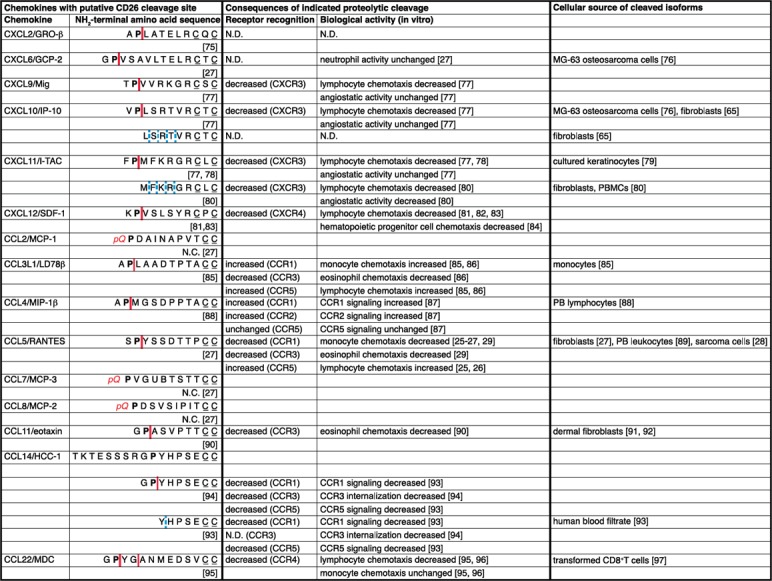Figure 1.

Overview of the chemokines with putative CD26 cleavage sites. The NH2‐terminal sequences of the chemokines are shown in 1‐letter code, and pQ points to an NH2‐terminal pyroglutamic acid. Cysteine residues are underlined to mark the CXC/CC motif. Observed cleavages by CD26 and CD13 are indicated with full or dotted vertical lines, respectively. When a chemokine is a substrate for CD26 and/or CD13, the consequences of cleavage on receptor binding and biologic activity are depicted, and potential cellular sources for these cleaved isoforms are exemplified. Reference numbers are indicated in brackets. N.D., Not determined; N.C., not cleaved; PB, peripheral blood; pQ, pyroglutamic acid.
